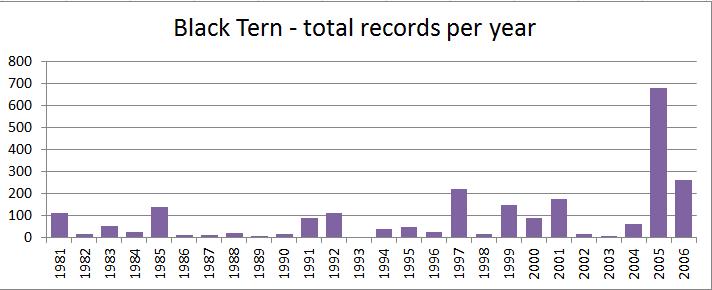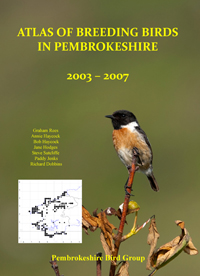Chlidonias niger Annual passage migrant.
The Black Tern has a widespread breeding range embracing the North Americas, Europe and Western Asia. Most of those seen in Pembrokeshire probably originated in Scandinavia, Poland and the western region of the former Soviet Union. Birds from this area migrate to winter along the western seaboard of Africa, where they are mostly coastal and pelagic.
Mathew (1894) mentioned just two undated records for the county and Lockley et al (1949) added just one more, shot at St David’s in September 1904. Black Terns were recorded 19 times between the years of 1949 and 1980, involving a total of 53 birds, the maximum in a year being 12 at Skokholm on the 8th September 1958. Post 1980 the Black Tern proved to be a regular autumn passage migrant in variable numbers. Records came from the Teifi Estuary, Nevern Estuary, Fishguard Harbour, Newgale, Broad Haven (North), several places within the Cleddau Estuary, Manorbier, Tenby, around the islands of Ramsey, Skokholm, Skomer and Grassholm, from the Fishguard to Rosslare and Pembroke to Rosslare ferries and over fresh water at Bosherston and Newgale Marsh. However the majority, 94 %, were seen at the intensely watched Strumble Head.
Annual total number of birds, 1981 – 2006.

 Tuesday, October 22, 2013 at 8:25AM
Tuesday, October 22, 2013 at 8:25AM  1949 BoP in
1949 BoP in  Black Tern
Black Tern 


